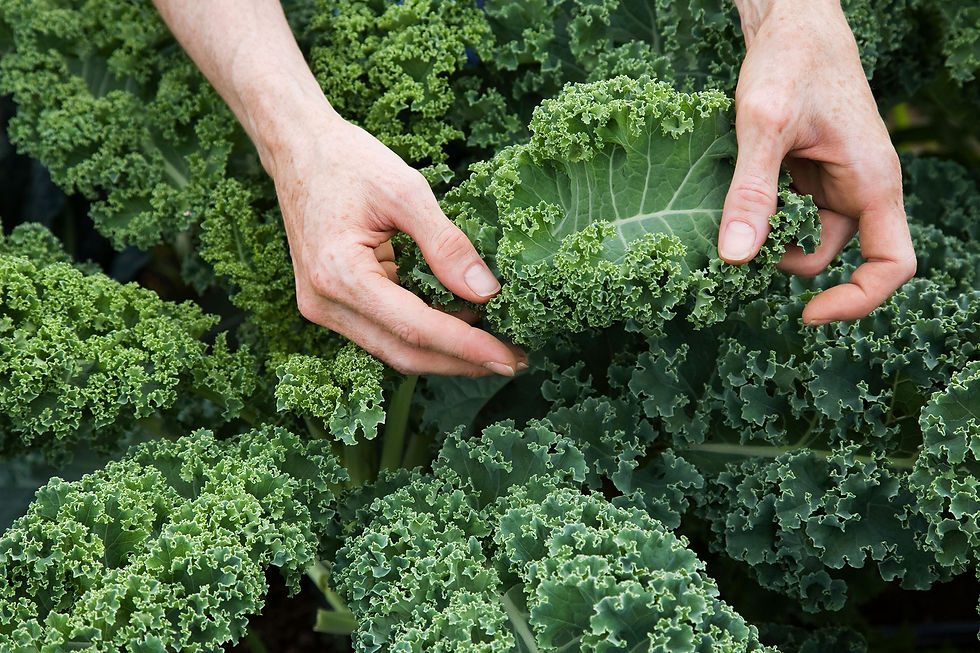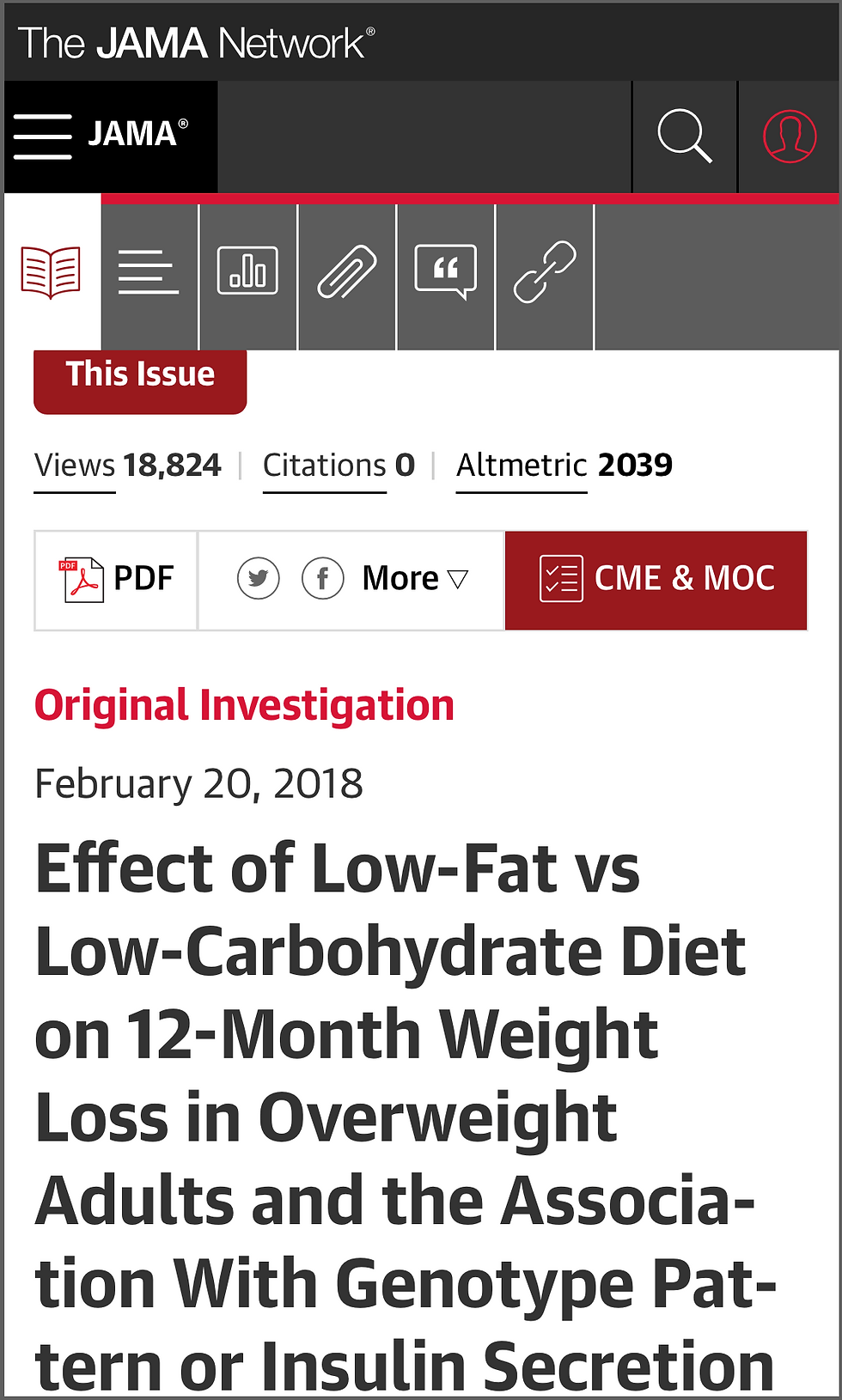Misrepresentation of a new diet study by the popular media
- Islon Woolf MD

- Feb 24, 2018
- 4 min read

“The Key to Weight Loss Is Diet Quality, Not Quantity, a New Study Finds”
This is the title of an article from this week’s New York Times. When I first read the title I was excited. This is one of the fundamental unanswered questions in the field of bariatric medicine (the study of obesity). What is more important with respect to weight loss, the quantity of food or the quality? The quantity model states all that matters is energy balance. The calories of the food you consume (calories in) minus the calories you burn off (calories out). As long as you count calories and keep active it doesn’t matter what type of food you put in your mouth. Thus, 1800 calories a day of M&M’s and McDonald’s will result in the same weight loss as 1800 calories of quinoa and kale.
On the other hand, the food quality model states that the type of food is more important than the quantity of calories. It hypothesizes that metabolism and satiety can be affected by differences in certain qualities of food. This includes macronutrients, micronutrients, prebiotics, probiotics, and toxins. From this there as many potential causes of obesity as can be dreamt up: fat content, protein content, carbohydrate content, saturated fat vs unsaturated fat, omega 3 vs omega 6 vs omega 9, glycemic index, ketogenesis, meat protein versus plant protein, red meat, organic vs non organic, GMO vs non-GMO, raw vs cooked, preservative content, heavy metal content, fiber content, water content, antioxidant content, polyphenol content, pesticide contamination, lectins, gluten, added salt, refined sugar, artificial sweeteners, etc.
How could a single study answer this hotly debated area of diet? Were all of the above qualities of foods tested individually? And if so, what were the methods? How would one design a study to prove that food quality trumps calories in/calories out?
One of the cardinal rules of critical thinking is that if something sounds too good to be true it probably is. It is a red flag that should lead to a close inspection of the evidence and the sources of evidence. My first step was to find the study referred to in the New York Times article. It was easy in this case as the link was displayed boldly at the beginning of the article. (This will prove to be quite ironic). The study was published in JAMA (Journal of the American Medical Association) and was led by a group at Stanford. It had over 600 participants and was funded by the NIH. The title of the study had no mention of “high quality” diets:


It quickly became apparent that the JAMA study was completely different than what was being described in the New York Times article - almost as if the author of the New York Times article hadn’t read the JAMA study. The purpose of the JAMA study was to compare a low fat diet with a low carbohydrate diet. After one year of followup, both diets led to an average of 12 lbs of weight loss. There was no difference between the two groups. These results are consistent with previous results and add nothing to our current knowledge - low fat diets seem to be as effective as low carb diets. The second goal of the study was to determine if certain people respond better to a low-fat vs a low-carb diet depending on their genes or insulin resistance. That is, is there a personalized diet? One that is right for you and not right for someone else? There were no patterns detected here either. For instance, even if you had insulin resistance (pre-diabetes) a low fat diet worked just as well as a low carb diet. This was summarized nicely in the “key points” and “abstract” section of the article:

Consistent with the JAMA study results, the Stanford University press release stated, “Low-fat or low-carb? It’s a draw, study finds. Stanford researchers have found that, contrary to previous studies, insulin levels and a specific genotype pattern don’t predict weight-loss success.”
If anything, the JAMA study is in support of the quantity model. So how did the author of the New York Times article derive, “The Key to Weight Loss Is Diet Quality, Not Quantity”? It turns out that all subjects in the JAMA study, both the low-fat and low-carb groups, were indeed instructed to eat a “high quality/healthy” diet and ignore counting calories. However, when a "high quality" diet is compared with another “high quality” diet it does not prove anything about “high quality” diets. If the authors of the study wanted to prove that a “high quality” diet was superior to a “low quality” diet they would need to include a “low quality” diet control group. Which was not done.
Furthermore, weight loss in the study was still achieved in the end by eating less calories. This may have nothing to do with any inherent properties of “high quality” foods other than a lack of palatability - there is only so much kale one person can eat.
Currently, there is no compelling evidence that food quality is the key to weight loss - despite the intellectual and Hippie allure of the idea. Dietary studies with “low quality” foods and counting calories are equally successful in weight loss - about 12 lbs of weight loss. Unfortunately, the real problem with all diets is that 90% of subjects start to regain the weight after the first year - regardless of the specific diet or quality of food.
Before I receive any angry emails, let me clarify that we are talking about weight loss, not health. I am not proposing that low quality food is as good as high quality food when it comes to disease prevention. That is a separate claim and a subject for another email.
Spin and misrepresentation with respect to medical research is very common in the popular media. I intend to bring many more examples of this phenomenon in subsequent emails. The ability to detect and confirm spin or misrepresentation is an excellent exercise in critical thinking. In many cases, it can be confirmed simply by referring to the original research paper. However, interpreting research papers requires a strong science background, and a working knowledge of statistics. My role as your Internist is to assist with this task. Please feel free to send me any articles you find suspect or “too good to be true”.

Comments